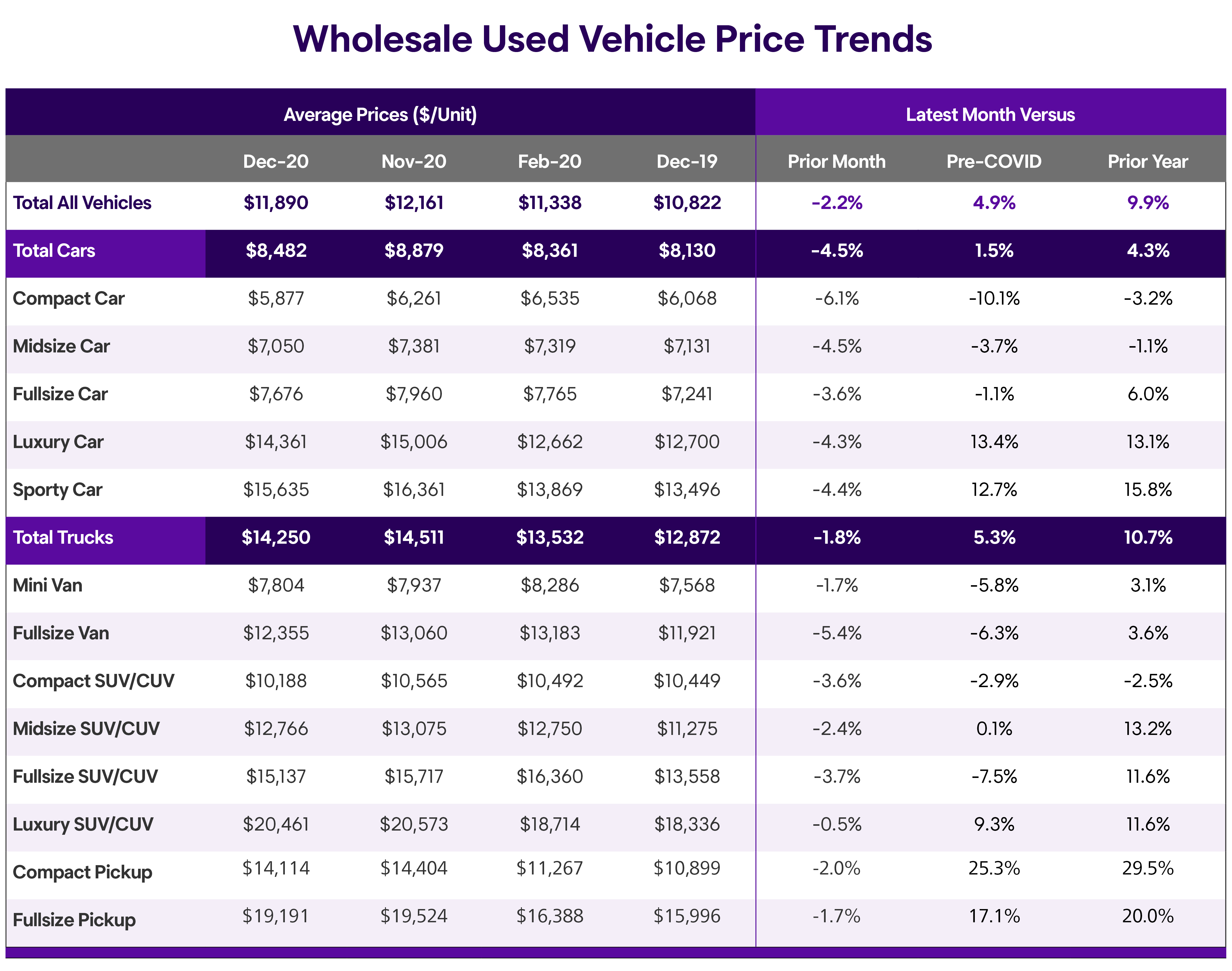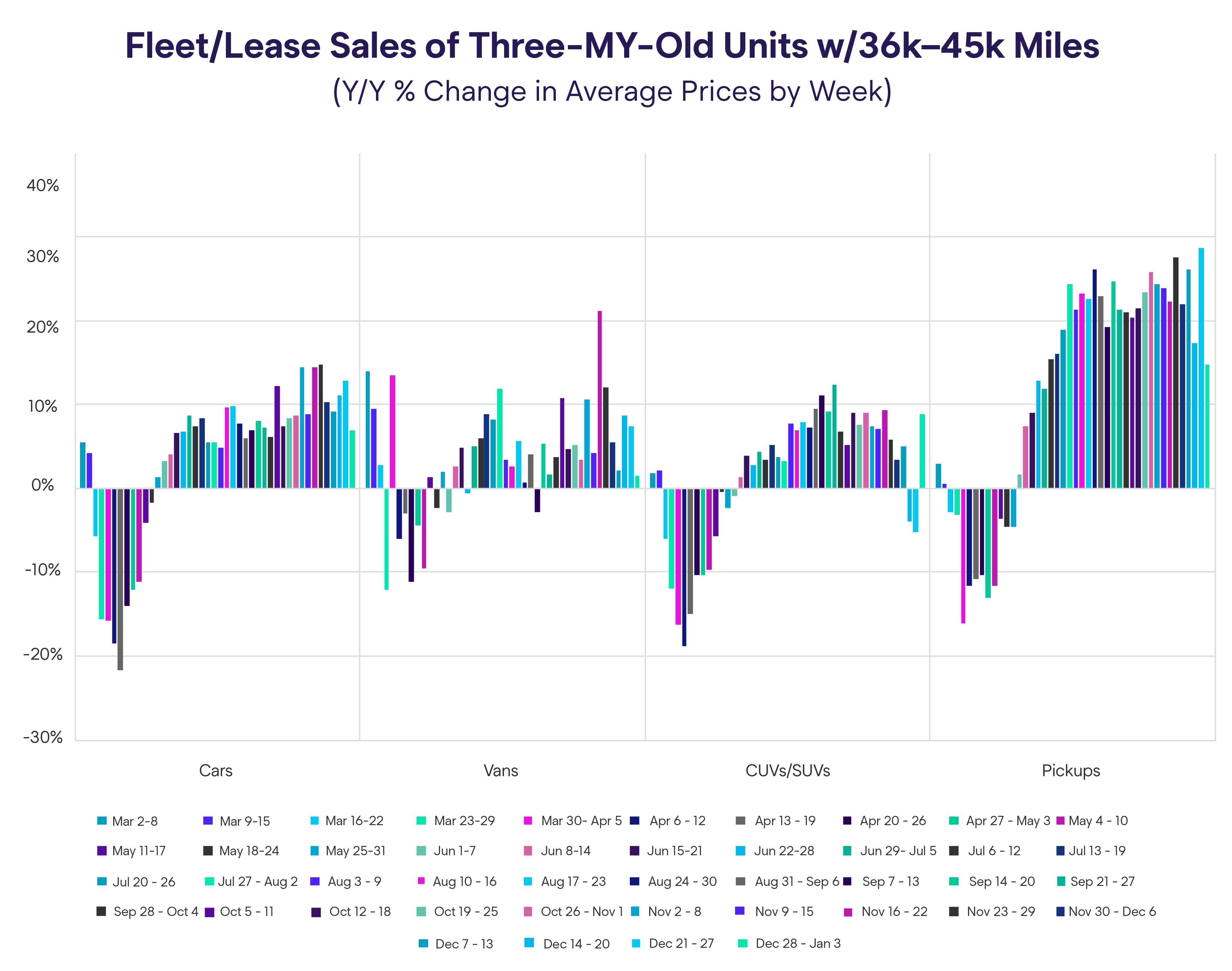December 2020 Kontos Kommentary
The following commentary is produced monthly by Tom Kontos, Chief Economist, KAR Global. KAR Global is a leading provider of wholesale used vehicle auctions and ancillary remarketing services.1
Summary
Average wholesale used vehicle prices fell from their August peak for the fourth month in a row in December, yet finished out the year almost 10% higher than year-ago levels. Full-year CPO sales were down in 2020, but only modestly considering the pandemic and the fact that 2019 was a record year.
Details
According to KAR Global Analytical Services’ monthly analysis of wholesale used vehicle prices by vehicle model class, wholesale prices in December averaged $12,161—down 2.2% compared to November, up 4.9% compared to pre-COVID/February and up 9.9% relative to December 2019, as seen in the table below.
Prices fell on a month-over-month basis for all model classes, with car segments generally falling more than truck segments. When holding constant for sale type, model-year-age, mileage, and model class segment—using criteria that characterize off-lease units—prices were up on a year-over-year basis for both midsize cars and midsize SUV/CUVs in December, as seen in the following table:
The following graph shows trends in average prices throughout the pandemic, using the same criteria:
Though auction prices have tapered since reaching their peak in August, prices remained up on a year-over-year basis at year-end for all model class groupings, especially pickup trucks. CPO sales were up 23.6% from the prior month but down 2.1% year-over-year in December, according to figures from Autodata. On a full-year basis, CPO sales were down 7.1%. Additional retail sales trends are available via KAR Global’s interactive dashboards.
Disclaimer: The views and analysis provided herein relate to the vehicle remarketing industry as a whole and may not relate directly to KAR Auction Services, Inc. The views and analysis are not the views of KAR Auction Services, its management or its subsidiaries; and their accuracy is not warranted.
Forward-Looking Statements: The statements contained in this report and statements that the company may make orally in connection with this report that are not historical facts (including, but not limited to, expectations, estimates, assumptions and projections regarding the industry and business) may be forward-looking statements. Words such as “should,” “may,” “will,” “anticipates,” “expects,” “intends,” “plans,” “believes,” “seeks,” “estimates,” “promises”, “likely to” and similar expressions identify forward-looking statements. Forward-looking statements are subject to risks and uncertainties that could cause actual results to differ materially from the results projected, expressed or implied by the forward-looking statements. Factors that could cause or contribute to such differences include those matters disclosed in the company’s Securities and Exchange Commission filings. The company does not undertake any obligation to update any forward-looking statements.




